The Intel Ivy Bridge (Core i7 3770K) Review
by Anand Lal Shimpi & Ryan Smith on April 23, 2012 12:03 PM EST- Posted in
- CPUs
- Intel
- Ivy Bridge
The 7 Series Chipset & USB 3.0
The platform story around Ivy Bridge is far better than it was when Sandy Bridge launched. There are a ton of chipsets, but the delineation makes sense this time. All chipsets support Ivy's processor graphics, however only the Z75/Z77 support CPU overclocking. The good news for current 6-series/Sandy Bridge owners is, with BIOS support, your platforms can support Ivy Bridge as well—making for a better upgrade path down the road.
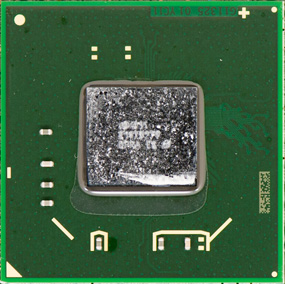 Intel Z77 PCH |
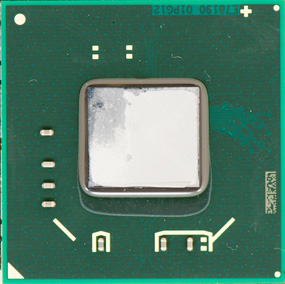 Intel Z68 PCH |
The new 7-series platform features PCIe 3.0 support, but only when used with an Ivy Bridge CPU, and only on the lanes that branch off of the CPU itself—the PCH lanes are still PCIe 2.0. Ivy's processor graphics, when combined with a 7-series chipset, also enables support for three independent displays (up from 2 with Sandy Bridge/6-series). Other than those two items, the only remaining feature is USB 3.0 support. Intel's 7-series PCH finally has native support for up to 4 USB 3.0 ports.
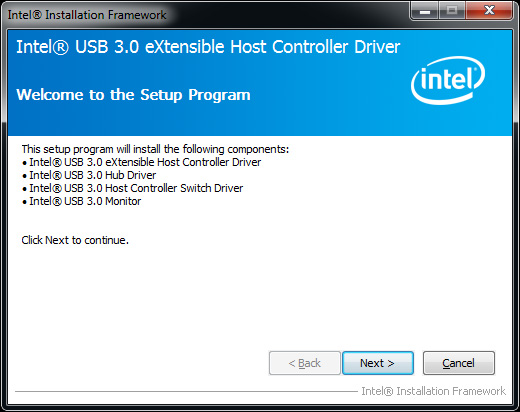
Performance of Intel's USB 3.0 controller is very good as you'll see in our upcoming Ivy Bridge motherboard roundup.
Intel's 7-series chipset does support Thunderbolt when paired with an external Cactus Ridge Thunderbolt controller, however the Thunderbolt for PCs launch has been pushed back to late May so we'll have to wait a bit before diving into that.
While most enthusiasts will focus on Z77, you can give up SSD caching, some flexibility on the PCIe side (and Thunderbolt support) and go for Intel's Z75 chipset. The chipset itself isn't much cheaper, but boards built around it will likely target lower price points and be lighter on features.


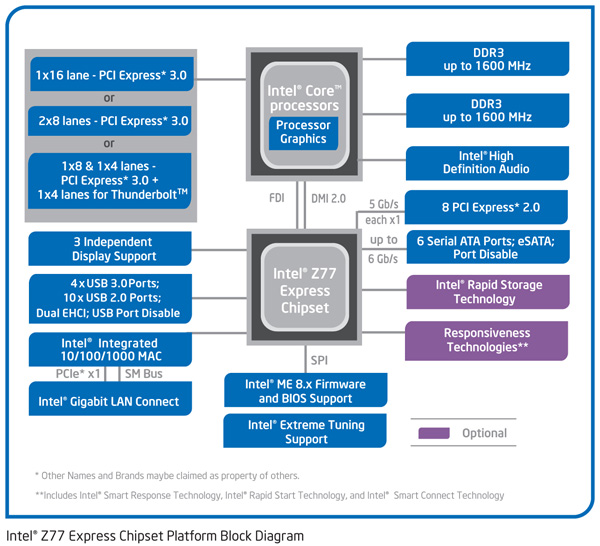
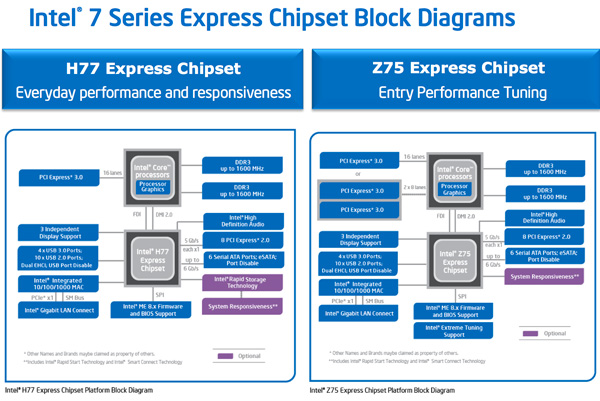
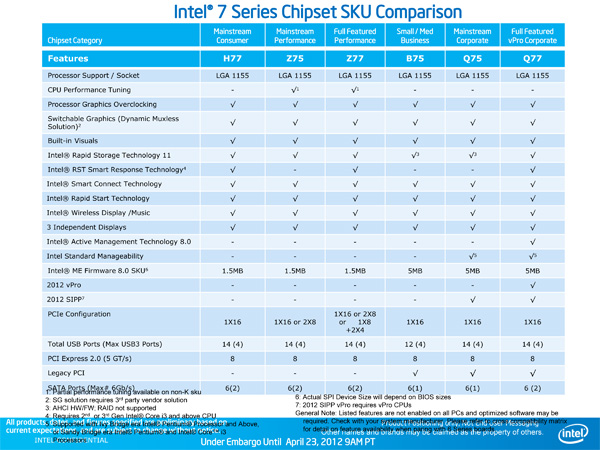








173 Comments
View All Comments
hechacker1 - Monday, April 23, 2012 - link
VT-d is interesting if you run ESXi or a Linux based hyper visor, as they allow to utilize VT-d to directly assign hardware to the virtual machines. I think you can even share hardware with it.In Linux for example you could host Windows and assign it a real GPU and get full performance from it.
A while ago I built a machine with that idea in mind, but the software bits weren't in place just yet.
I too with for an overclockable VT-d part.
terragb - Monday, April 23, 2012 - link
Just to add to this, all the processors do support VT-x which is the potentially performance enhancing spec for virtualization.JimmiG - Monday, April 23, 2012 - link
Really annoying how Intel decides seemingly at random which parts get VT-d and which don't.Why do you get it with the $174 i5 3450, but not with the "one CPU to rule them all", everything-but-the-kitchen-sink, $313 i7 3770K?
It's also a stupid way to segment your product line, since 99% of the people buying systems with these CPUs won't even know what it does.
This means AMD also gets some of my money when I upgrade - I'll just build a cheap Bulldozer system for my virtualization needs. I can't really use my Phenom II X4 for that after upgrading - it uses too much power and it's dependent on DDR-2 RAM, which is hard to find and expensive.
dcollins - Monday, April 23, 2012 - link
VT-d is required to support Intel's Trusted Execution Platform, which is used by many OEMs to provide business management tools. That's why the low end CPUs have support and the enthusiast SKUs do not. VT-d provides no benefit to Desktop users right now because desktop virtualization packages do not support it.I agree that it is frustrating having to sacrifice future-proofing for overclocking, but Intel's logic kind of makes sense. Remember, any features that can be disabled will increase yields which means lower prices (or higher margins).
JimmiG - Tuesday, April 24, 2012 - link
VirtualBox, which is one of the most popular desktop virtualization packages, does support VT-d. In fact it's required for 64-bit guests and guests with more than one CPU being virtualized.Does VT-d really use so many transistors that disabling it increases yields? AMD keep their hardware virtualization features enabled even in their lowest-end CPUs (even those where entire cores have been disabled to increase yields)
dgingeri - Monday, April 23, 2012 - link
"I took the last Harry Potter Blu-ray, stripped it of its DRM and used Media Espresso to make it playable on an iPad 2 (1024 x 768 preset)."I wouldn't admit that in print, if I were you. The DMCA goblins will come and get you.
p05esto - Monday, April 23, 2012 - link
They can say they're just kidding and used it as an example, because they would "never" actually do that. I think pirate cops would need more than talk to go to court. Imagine how bad this site would rip into them if they said anything, lol.XJDHDR - Monday, April 23, 2012 - link
Why? No-one loses money from transcode benchmarks. Besides, piracy is the real problem. If it didn't exist, there would be no DRM to strip away.dgingeri - Monday, April 23, 2012 - link
Sure, nobody loses any money, but the entertainment industry pushed DMCA through, and they will use it if they think they could get any profit out of it. It's one law, out of many, that isn't there to protect anyone. It's there so the MPAA and RIAA can screw people over.copyrightforreal - Monday, April 23, 2012 - link
Don't pretend you know shit about copyright law when you don't.Ripping a DVD you own is NOT illegal under the DMCA or Copyright act.
Wikipedia article that even you will be able to comprehend:
http://en.wikipedia.org/wiki/Ripping#Circumvention...